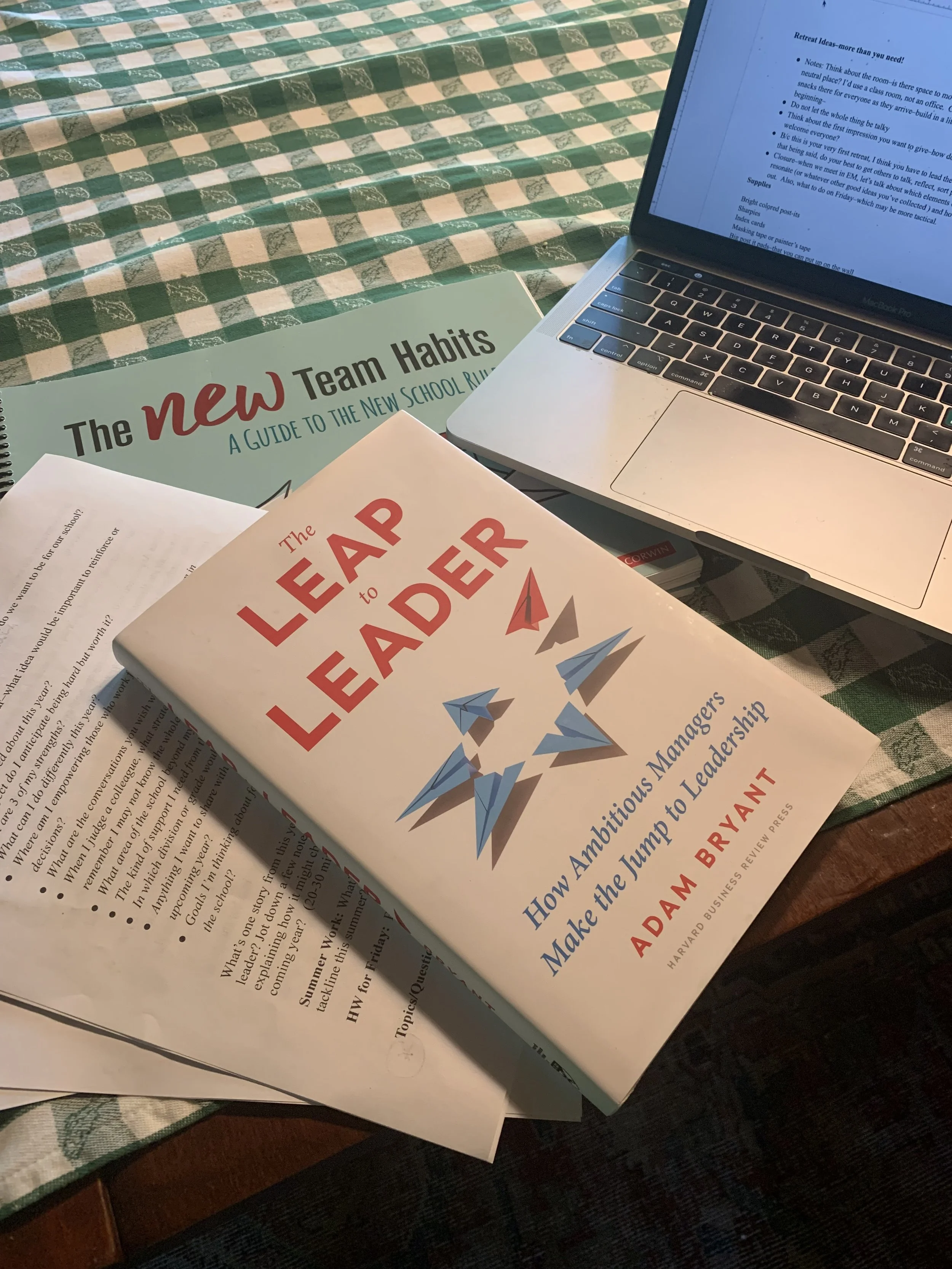Navigating Cultural Norms and Snakepits!
It’s a well-known adage that “culture eats strategy for breakfast.” The tricky thing about culture is that the nuances of any school culture can be hard for a newcomer to discern. People know when you betray your newness with a misstep, but you may not know precisely how you went awry.
What to do? First, pay attention. Remember that the guest sees more in a day than the host sees in a month. Being new is a gift; don’t squander it.
When you are new to a culture, or even new to a role in a familiar culture, imagine yourself as a tourist in a new city. Take some time to get the lay of the land. I love the change of scenery that new cities or landscapes offer: different architecture, unfamiliar plants or trees, unusual light. I love to sit and people watch, jotting down my impressions. So, too, you might take time to note your own first impressions. I’m a big believer in writing notes; we move so fast in schools and we think we will remember all we experience, but we can’t possibly recall everything.)
Try not to judge your first impressions; be aware; take in information with your five senses and with your intuition—what I often call your “Scooby sense.” (Sadly, I reveal that I was a Scooby Doo fan in my youth; I was a child of the late 60s and early 70s after all—who doesn’t love a good mystery and a van?). Let those impressions percolate—eventually, you will get a sense of whether or not your instincts about people’s motives or behavior were correct; you don’t need to know everything at the beginning.
The best book I know about culture is Dan Coyle’s The Culture Code. I’ve underlined so much of it that I need a new copy. (As a side note, he is the father of three magnificent daughters who are Laurel School graduates, and he is a formidable, funny, fabulous speaker and human). Culture matters and changing it for the better, in my opinion, takes sustained work by many people over time. Some things seem to be “in the water” in a school—some dynamics may have roots that go back several generations. Don’t act too fast; don’t wait too long—if that feels paradoxical, yes. It will take some time for you to determine your priorities; if you are leading a team, you will want the people who work with you to buy into the vision you have and there is value in co-creating your strategy and timeline for change with that team.
Reading Dan’s book reminded me of another mantra I learned from consultant, Debbie Freed, based in California. “What you permit, you promote.”
This phrase echoes in my brain when I find myself in one of those perennial conversations that occur in schools. A group of well-meaning, smart people go round and round on a topic for the umpteenth time without moving forward. Perhaps it’s a staff member who isn’t performing well; perhaps it’s a toxic parent. The fact is that ruminating doesn’t always move us forward. If bad behavior has been allowed to persist, you may find yourself needing to be the one to make a change. People may be anxious for you to do so and as soon as you do, people may be angry that you made the very change they asked you to make. Such is leadership. Be mindful, in a new role, of the unresolved issues people may hope you have come to fix. You might be a fixer, but be cautious; don’t simply leap to action before you ask a lot of questions and have a sense of all the issues at play.
Asking questions is a great way to come to know culture. Our schools are full of lingo and acronyms, traditions and rituals. Sometimes—particularly if you are the new Head—people assume you know everything. Don’t pretend you do. Ask lots of questions. Here are a few other tips about navigating a new culture:
-
Be mindful of all you don’t know. Try not to assume.
-
Know that the sentence, “At my last school…” gets old fast.
· Be careful about designing/suggesting solutions based on what worked in your old school. It’s hard to lay the cultural norms of one school on top of another without adaptation or revision.
-
What might someone not know that is a cultural norm at your new school? Here are some examples from Laurel, the school I lead:
-
On Fridays, adults wear our school colors: green and white.
-
We dress up for parent events.
-
Typically, we are a last name culture in front of children.
-
Respond to a parent or colleague email within 24 hours—even if you need to say you need more time.
-
Do not put tricky things in email—pick up the phone.
-
We try to avoid email after 6 pm and over weekends
-
Do not text with students–if you must, texting a group is better than texting individuals.
-
Do follow Laurel social media accounts and “like” and share if so inclined
Side bar: As much as possible, remember that your personal and public lives are merged on social media; high school girls know more about social media than any adult—they will find that unfortunate post or dating profile you made years ago. Google yourself. Go deep.
· Relationships change when your role changes. You may feel colleagues treat you differently if they assume you have more power; you may feel awkward or formal. There’s no quick remedy here. You have a job to do; you will do it in the best way you know how, but it may be true that people don’t want to hang out with you in the same way.
· Much has been written about the loneliness of headship; that’s amplified if you move to a new part of the country; my husband and I had both been schoolteachers, and our colleagues made up the majority of our friend group. When we moved to Cleveland for my Headship, that changed—understandably. I was now the boss. I felt like the same Ann I had always been, but how people perceived me differently because of my role. I was the boss. Remember everything you learned about psychology in college. Read up on projection and transference. Heads often stand in for other authority figures. Who you actually are may have nothing whatever to do with how people perceive you—that’s on them, not you, but it can be bewildering.
· People may show you one side of themselves and another to colleagues, who are not their supervisors. Once I commented that a particular colleague was always so quick to respond to my emails. “To your emails,” a division director muttered. Oops. I’m not sure I had fully realized, until that moment, that people behave differently with the head.
Eschew Clique-y-ness
As a young teacher, I was always aware of who my Division Director or Department Chair sat with at lunch or sat next to at meetings. I watched them, curious about who they chose to be with. I wanted to be in their “inner circles.” Once, I looked up during a meeting to find a young colleague looking at me. I felt a frisson of recognition—I used to scrutinize the head’s expression after a ludicrous or provocative comment. Now, she was examining my face for clues to my reaction.
We are human. Some people are more fun or easier to be with than others, but be aware of who you spend time with–when possible, reach beyond your circle—as a leader, you do not want to be “cliquey.” Be mindful of who has your ear. Are you listening a great deal to one or two people? Why? As a newcomer, you have to get information from folks, but those who are eager to curry favor may not end up being your most trusted sources.
Mix it up. Sit at lunch with different colleagues. Speaking of which, it’s tempting to take a plate to your office, but eat with colleagues when you can or with students (if they’ll have you).
Remember gossip. You may suddenly be more interesting to people than you were before. If you are too exclusive with one or two colleagues, people make up rumors…sad, but true. And people may gossip about you anyway—you may have the uncomfortable feeling that a conversation stops when you enter a room. It might. People may speculate about your marriage or your children—there is nothing you can do about this. Walk on by as much as possible.
Next week: everything you need to know about meetings!


